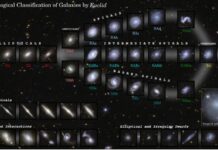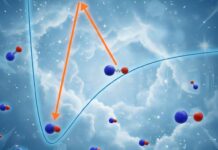For decades, NASA has monitored a significant and expanding anomaly in Earth’s magnetic field – the South Atlantic Anomaly (SAA). This vast region of reduced magnetic intensity, stretching between South America and southwest Africa, poses challenges for spacecraft while offering scientists a unique opportunity to study a complex geophysical phenomenon.
The Weakening Field: A Growing Concern
The SAA is not a sudden event; it has been growing in size and weakening in intensity since at least 2014, now covering an area roughly half the size of continental Europe. This weakening is not a uniform process; recent data suggests the anomaly may be splitting into two distinct cells, each with its own center of minimal magnetic strength.
Why This Matters: Spacecraft Vulnerability
While the SAA doesn’t directly affect life on Earth, it poses risks to orbiting spacecraft, including the International Space Station. The weakened magnetic field allows high-energy particles from the Sun to penetrate deeper, potentially causing short circuits, data loss, or permanent damage to sensitive systems. Satellite operators routinely shut down non-essential systems when passing through the anomaly to mitigate these risks.
The Science Behind the Anomaly
Earth’s magnetic field is generated by the swirling molten iron in its outer core. However, the SAA appears to be influenced by localized disturbances in this process. One major factor is the African Large Low Shear Velocity Province – a massive reservoir of dense rock deep beneath the African continent. This geological feature disrupts the normal flow of molten iron, weakening the magnetic field in the region.
A Recurring Phenomenon?
Recent research suggests the SAA isn’t a new development. Studies indicate similar magnetic anomalies have occurred repeatedly throughout Earth’s history, potentially dating back as far as 11 million years. This suggests the SAA may be a cyclical event rather than a precursor to a full magnetic pole reversal, which happens over much longer timescales (hundreds of thousands of years).
New Insights: Auroras and Regional Differences
Recent findings from ESA’s Swarm mission reveal that the SAA’s weakening isn’t uniform. The field is weakening more intensely near Africa than in South America, indicating complex regional dynamics. Furthermore, the SAA appears to influence the occurrence and intensity of auroras, the colorful displays of light in the sky.
Ongoing Research and Future Predictions
NASA and other research institutions continue to monitor the SAA closely. Ongoing missions and advanced modeling techniques are crucial for understanding its behavior and predicting its future evolution. The SAA’s slow but persistent changes highlight the dynamic nature of Earth’s magnetic field and the importance of sustained scientific observation.
The South Atlantic Anomaly remains a complex and evolving phenomenon. While it poses challenges for space technology, it also provides a unique opportunity to study the intricate workings of our planet’s magnetic field. Continued research is vital for understanding its long-term implications and ensuring the safety of future space missions
























